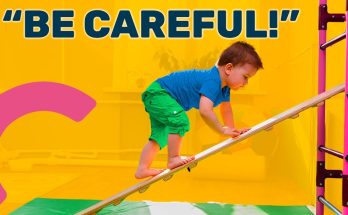Swaddling is an age-old technique used to help newborns feel secure and sleep more soundly by mimicking the snugness they experienced in the womb. When done correctly, it can provide comfort and reduce the startle reflex, also known as the Moro reflex, which can cause babies to wake up. However, it is crucial to swaddle a baby properly to ensure safety and avoid potential risks. Here’s a comprehensive guide on how to swaddle a baby perfectly.
What You Need
To swaddle your baby, you’ll need a large, breathable blanket or a specifically designed swaddle sack. Swaddle blankets are typically square or rectangular, made of lightweight cotton or muslin, which allows for airflow and reduces overheating risks. Many parents opt for swaddle sacks, which have Velcro or zipper closures, ensuring the swaddle stays securely in place.
Step-by-Step Instructions on How to Swaddle
-
Prepare the Blanket: Start by laying the blanket flat on a soft, safe surface like a changing table, crib, or your bed. If you’re using a square blanket, fold one corner down to create a triangle shape, which will form a pocket for the baby’s body.
-
Position the Baby: Lay your baby on their back on the blanket. The baby’s head should be just above the fold at the top of the blanket. Ensure the baby’s arms are relaxed by their sides or slightly bent at the elbows.
-
Secure One Side: Take the left side of the blanket and bring it across the baby’s body. Tuck it under the baby’s right side, keeping the baby’s arm securely inside the blanket. The goal is to have the blanket snug but not too tight, allowing for some movement of the baby’s hips and legs. Over-tightening can cause discomfort or restrict proper hip development.
-
Wrap the Bottom: Next, take the bottom of the blanket and fold it up over the baby’s feet. This will ensure their legs are contained and prevent them from kicking out of the swaddle. The blanket should be snug enough to keep the legs in place but should still allow for some natural movement of the hips.
-
Secure the Other Side: Now, take the right side of the blanket and bring it across the baby’s body, tucking it underneath the baby’s left side. Ensure that both arms are comfortably swaddled, and the blanket is not too tight around the chest. You should be able to slide two fingers between the baby’s chest and the swaddle.
-
Final Adjustments: Make sure the swaddle is snug but still allows the baby to breathe comfortably. There should be enough room at the top of the swaddle for the baby’s head to move freely. Double-check the baby’s arms, legs, and hips to ensure they are positioned comfortably and securely within the swaddle.
Important Safety Tips
- Avoid Overheating: Babies can overheat quickly, so it’s essential to monitor the room temperature and dress your baby in breathable fabrics. Never swaddle your baby with a thick blanket or too many layers.
- Ensure Hip Health: Always ensure the baby’s legs have room to move slightly in the swaddle to avoid hip dysplasia, which can occur if the baby’s legs are swaddled too tightly.
- Back Sleeping: Always place the baby on their back to sleep, as swaddling increases the risk of suffocation if the baby rolls over onto their stomach.
- Don’t Swaddle Too Long: Once your baby starts showing signs of rolling over (around 2-3 months), it’s time to stop swaddling. At this stage, swaddling can become a safety risk as it may restrict the baby’s ability to push up or move if they roll.
Conclusion
Swaddling can be a highly effective way to calm a baby and help them sleep, but it must be done safely. Always ensure the swaddle is snug but not tight, particularly around the chest, and allow the baby’s hips and legs to move freely. It’s also essential to monitor your baby’s temperature and never swaddle too tightly or for too long. When done correctly, swaddling can be a comforting and soothing practice for both babies and parents.



